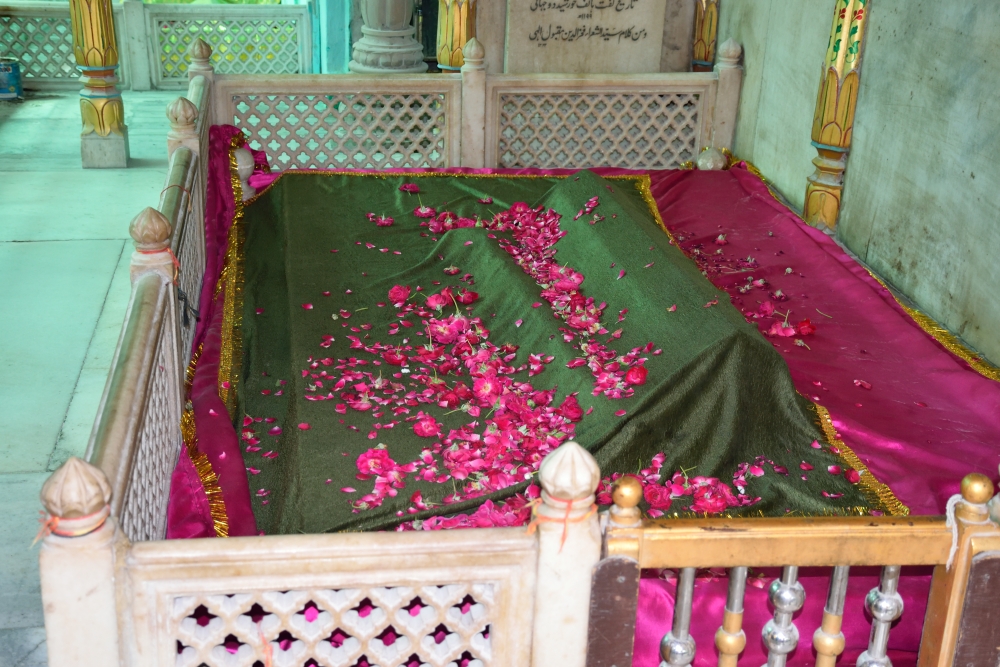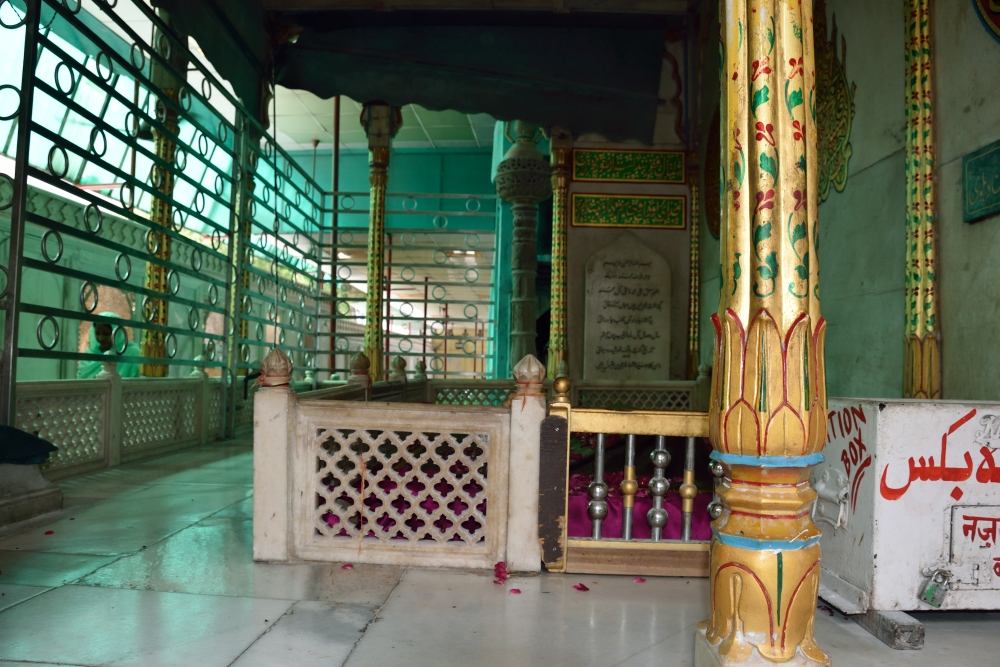



Approach: Approximately 350 meters south-west of Mehrauli bus stand and approximately 1.7 km north-west of Qutub Minar metro station, immediately south of the tomb of Qutub Sahib, Mehrauli. Airport: IGI (Indira Gandhi International Airport) Railway Station: Nizamuddin Railway Station Bus Station: Mehrauli Bus Stand
Maulana Fakhruddin was a highly revered saint of the Chishti sect, known for his spiritual teachings and deep influence on his followers. He was born in the year 1714 A.D. and gained immense popularity among the people of his time. His teachings and spiritual guidance attracted a large number of devotees, and his legacy continues to be honored through the maintenance of his tomb. Local / Traditional Significance The tomb of Maulana Fakhruddin holds great religious and cultural significance, especially among followers of the Islamic faith. It has been a place of pilgrimage for devotees who visit to pay their respects and seek blessings. The site remains an important spiritual center where people gather for prayers and reflection, reinforcing the saint?s enduring influence on the community. Architectural Style The tomb of Maulana Fakhruddin is built in the Mughal architectural style, which is characterized by intricate craftsmanship, symmetrical structures, and the extensive use of marble. This style reflects the grandeur and artistic excellence of the Mughal period, making the tomb a remarkable example of heritage architecture. Description of the Structure The tomb is a beautifully designed rectangular structure. The grave itself is surrounded by a low marble balustrade, which is typically kept covered as a mark of reverence. The entire structure rests on a marble platform measuring approximately 4.88 meters by 2.47 meters, which is also adorned with a balustrade similar in design to the one around the grave. The tomb features fluted white marble columns that gracefully support the marble roof, adding to the elegance of the structure. An inscription at the head of the tombstone provides historical details, including the date of Maulana Fakhruddin?s passing. It mentions the Islamic year 1222 A.H. and gives 1199 A.H. (1784-85 A.D.) as the chronogram of his death. The parapet columns have been adorned with golden polish, featuring intricate foliated and petal designs. The marble roof and columns exhibit elaborate carvings and are painted in multiple vibrant colors, showcasing the refined artistic traditions of the Mughal era. The floor of the tomb is also covered with marble, enhancing the overall aesthetic appeal of the monument. Construction Material and Other Components The primary material used in the construction of the tomb is marble, which gives it a majestic and serene appearance. The grave enclosure, as well as the balustrades, columns, and platform, are all made of high-quality marble. The detailed carvings, golden polish, and painted decorations further highlight the exquisite craftsmanship involved in the construction of this historic site. The combination of these elements makes the tomb a significant architectural and religious landmark.
Year of Built: 19th - 20th Century
Address: Dargah of Qutub Sahib, Ward No-7, Mehrauli
Country: India
State: Delhi
District: South Delhi
Pincode: 110030
Longitude: 77 10 49
Latitude: 28 31 8